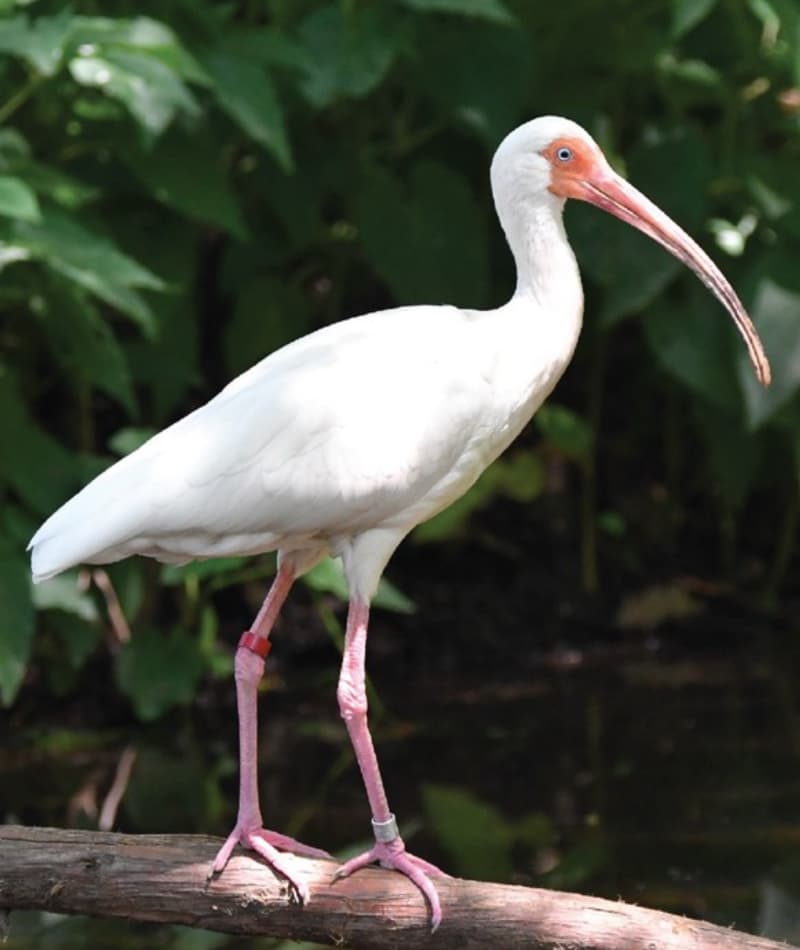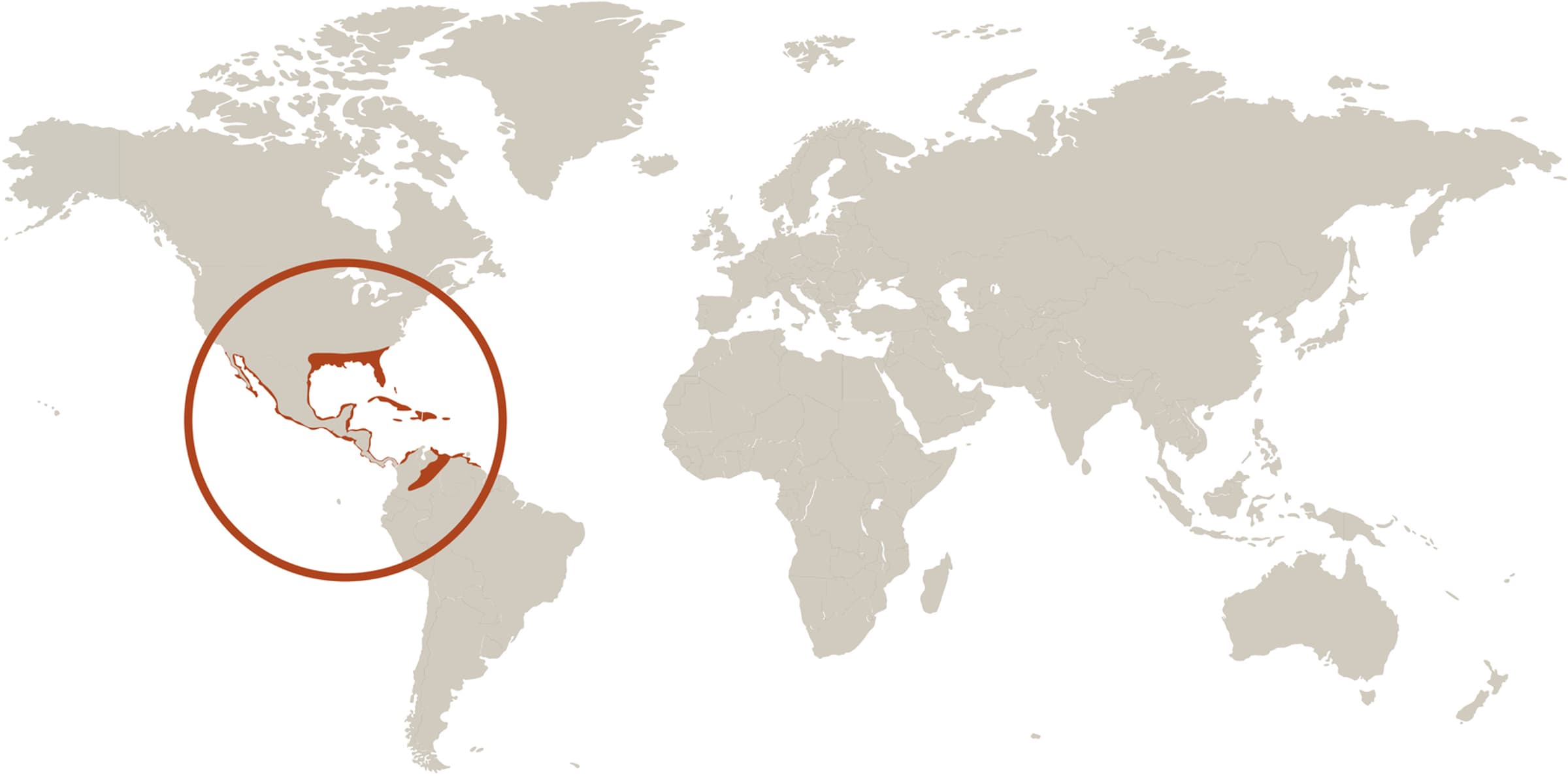
White Ibis
Eudocimus albus
Did you know?
- The birds build their nests in low trees and thickets, from 2 to 15 feet off the ground.
- Both male and female cooperate in building the nest, which is usually a platform of sticks, grass or reeds.
- The female lays two to three eggs, which hatch after three weeks.
- Young white ibises are dark brown with a white belly and rump.
- Parents feed chicks by regurgitating food from their stomachs.
Dredging for Dinner
White ibises spend most of their day foraging in shallow water for crabs, crayfish, insects, snails, frogs, snakes, and small fish. They find their prey by wading slowly and probing the mud and water carefully with their long, curved bill
Social Species
This sociable wading bird is quite common in many parts of its range. It roosts and feeds in flocks, and nests in large colonies, often with birds of other species.
Threat Level
- Unknown
- Common
- Near Threatened
- Threatened
- Endangered
- Critically Endangered
- Extinct in the Wild
Common
The White Ibis is widespread and abundant.
Range
North and South America, West Indies
Habitat
Marshes, mangroves, lakes, lagoons, swamps

We care about white ibises
The Saint Louis Zoo supports white ibises at the Cypress Swamp.
Find this animal in Historic Hill

SAINT LOUIS ZOO ZONE
Historic Hill
Historic Hill is a lovely stroll through one of the oldest parts of the Saint Louis Zoo. From the 1904 World’s Fair Flight Cage to the Spanish architectural flavor of the 1920s in the Bird House, Primate House and Herpetarium to the finishing touches of our thoroughly modern exhibits, this area of the Zoo has a unique ambiance and a nostalgic history that make it a great destination.

